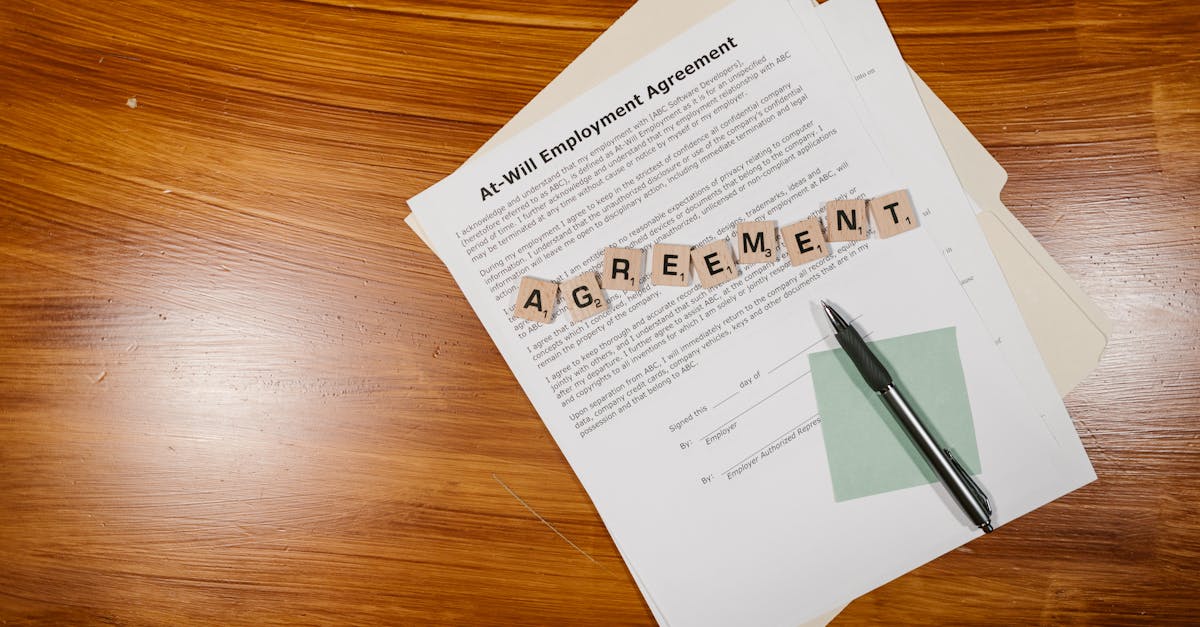
Introduction
If your organization spans time zones, devices, and employment types, distributing a new policy is more than hitting send — it’s about ensuring reach, correct localization, and provable proof of receipt. Fragmented systems, informal acknowledgements, and ad-hoc translations leave gaps that expose you to compliance risk and force legal and HR teams into time-consuming firefighting.
AI-powered document automation changes that equation: it can produce jurisdictional clauses, role-based bundles, and translated versions, then drive timed reminders, escalations, and time-stamped acknowledgements as part of a scalable remote workflow. The sections that follow show how to localize at speed, automate acknowledgement and remediation, build reliable audit trails, and assemble template-driven workflows and technical building blocks so your team can roll out policies with confidence and defensible records.
Policy distribution challenges for remote and hybrid organizations (reach, localization, proof of receipt)
Reach across locations and devices. Remote and hybrid setups mean employees use different time zones, networks, and devices. Ensuring every person in a distributed team workflow actually receives the latest policy requires multiple delivery channels (email, intranet, mobile push, and integrated HR portals) and monitoring for delivery failures.
Localization and legal variance. Policies often need adjustments by jurisdiction and employment type. A one-size-fits-all policy for a remote work population can expose the company to compliance risk if local labor or privacy rules aren’t considered.
Proof of receipt and acknowledgement
Collecting reliable acknowledgements is harder when people work asynchronously. Proof of receipt must include machine-verified timestamps, device identifiers or IP context where legally permissible, and records that tie the acknowledgement to a specific policy version.
- Visibility gaps: fragmented systems create uncertainty about who saw what.
- Localization gaps: translated or jurisdiction-specific clauses may not reach the right employees.
- Verification gaps: informal chat confirmations don’t meet audit standards.
Addressing these challenges is core to designing a scalable remote workflow for policy distribution across your telecommuting and hybrid workforce.
How AI enables policy localization: jurisdictional clauses, role‑based tailoring and automated translations
Automated jurisdictional clauses. AI can scan a master policy and inject jurisdiction-specific language based on employee location or contract terms. This reduces legal review cycles and produces a version tailored to local law while keeping a single source of truth.
Role-based tailoring. Use AI to map job profiles to policy sections. For example, finance roles get additional data-handling clauses; contractors receive limited benefits language. That produces role‑based policy bundles aligned with distributed team workflow needs.
Automated translations and quality control
Modern translation engines provide rapid, near‑human translations that can be post‑reviewed by in-country SMEs. When integrated into your remote workflow tools, translations are versioned and released alongside the original policy so remote collaboration is consistent across languages.
Practical benefits:
- Faster rollout of localized policies.
- Consistent role-based coverage for remote work and hybrid work models.
- Reduced manual edits and legal bottlenecks through AI-assisted drafting.
Automated acknowledgement workflows: reminder cadence, escalations, conditional follow‑up training triggers
Design the reminder cadence. Set an initial notification, a first reminder at 3–5 days, and a final reminder before escalation. Use analytics to adjust cadence per team—some distributed teams respond better to slower cadences due to asynchronous schedules.
Escalation paths
Escalations should be automatic and role-aware. If an employee misses the final reminder, route a notification to their manager and HR. For critical policies, trigger HR case creation or temporary access restrictions until acknowledgement.
Conditional follow‑up training
Tie acknowledgements to training triggers: if an employee indicates they don’t understand a clause or fails a short comprehension quiz, the system should auto-enroll them in targeted micro-training and track completion as part of the remote workflow compliance record.
- Asynchronous-friendly: schedule reminders and training for the employee’s local timezone.
- Contextual prompts: show the most relevant clause first based on role.
- Escalation transparency: keep managers informed with digest reports rather than one-off pings.
Creating reliable audit trails: version control, time‑stamped acknowledgements and exportable compliance evidence
Version control is non-negotiable. Store every policy iteration with immutable metadata: who edited it, why, and what changed. Link each employee acknowledgement to the exact version they received to avoid disputes about which terms applied.
Time‑stamped acknowledgements
Capture machine-verified timestamps, the policy version ID, and the context (device, IP, timezone) where legally appropriate. These elements turn a simple “I read it” into defensible evidence for audits and investigations.
Exportable evidence and reports
Compliance teams need exports that map employees to policy versions, acknowledgement timestamps, and any follow-up training or escalations. Provide CSV/JSON exports and PDF bundles that package the policy text, the employee’s acknowledgement record, and any related training completions.
- Retention policies: align storage duration with legal requirements.
- Data minimization: only capture context fields needed for compliance.
- Audit readiness: enable fast queries by policy, person, role, or jurisdiction.
Templates to automate and scale: employee agreements, role‑based policy bundles, confidentiality acknowledgements
Standardize and reuse templates. Start with authoritative templates for frequent needs: employment agreements, NDAs, and role-specific policy bundles. Templates accelerate onboarding and ensure consistent application of remote workflow best practices across the organization.
Practical template examples
- Employment agreement template — include core terms, remote work addenda, and jurisdictional selectors: https://formtify.app/set/employment-agreement-mdok9
- Confidentiality / NDA acknowledgement — short acknowledgement flows for contractors and remote employees: https://formtify.app/set/non-disclosure-agreementemployee-b9s6h
- Role-based bundles — combine the base employee agreement with additional modules (IT security, finance, manufacturing) delivered based on job profile.
How templates support scale: they produce predictable remote workflow examples you can clone, version, and audit. Use a template library as part of your remote workflow template strategy so HR and legal can rapidly assemble documents and policy sets for new hires and internal moves.
Technical building blocks: e‑sign, translation engines, versioning, reporting and analytics
Essential components for a reliable system. Combine e-signature providers, translation engines, a version-controlled document store, and a reporting layer to build a full remote workflow platform for policy distribution and acknowledgement.
Key technical elements
- E‑sign: legally binding signature capture and audit logs to prove acceptance.
- Translation engines: integration with automated translators plus in-country review workflows for accuracy.
- Versioning: immutable document IDs and diffs so you can trace changes over time.
- Reporting and analytics: dashboards for acknowledgement rates, overdue items, and training correlations. Exportable data for audits.
Connectivity and integrations: integrate with HRIS, SSO, LMS, and ticketing systems to automate triggers and keep the compliance record synchronized across tools. These integrations make the remote workflow resilient and reduce manual reconciliation work.
Adoption checklist: pilot groups, monitoring ack rates, remediation workflows for non‑compliant employees
Run a focused pilot. Start with a representative pilot group (mix of locations, roles, and contractors) to validate localization, reminder cadence, and AI tailoring before enterprise rollout.
Monitoring and metrics
Track these core metrics: acknowledgement rate by group, time-to-acknowledge median, number of escalations, and completion rate of conditional training. Use dashboards and scheduled reports to surface trends and problem areas.
Remediation workflows
Define clear remediation steps for non-compliance: automated reminders → manager notification → HR intervention → temporary access controls. Document each step in your remediation policy and automate where possible so the workflow is consistent and defensible.
- Communication plan: provide clear employee instructions and FAQs to reduce friction.
- Fairness and privacy: allow appeals and record review while protecting personal data.
- Scale plan: expand from pilot to phased rollout using lessons learned and refine remote workflow tools and templates.
Following this checklist ensures your distributed team workflow achieves high coverage and that non-compliance is handled quickly and transparently.
Summary
In short, AI-powered document automation turns a multi-step, error-prone policy rollout into a predictable, auditable process: it ensures reach across locations and devices, automates jurisdictional and role-based localization, drives timed acknowledgements and escalations, and produces immutable audit trails and exportable evidence. For HR and legal teams, that means fewer manual edits and escalations, faster and more defensible rollouts, and clearer remediation paths when employees don’t comply. Embracing these tools—template libraries, e-sign, translation engines, and analytics—lets you scale your remote workflow with confidence and reduce compliance risk. Ready to streamline policy distribution? Learn how at https://formtify.app
FAQs
What is a remote workflow?
A remote workflow is a set of coordinated processes and tools that let distributed teams complete tasks and make decisions asynchronously and across locations. It defines who does what, when, and how work is handed off, and it relies on integrations (HRIS, SSO, LMS, ticketing) and automation to keep things running smoothly.
How do I design an effective remote workflow?
Start by mapping the end‑to‑end process, selecting representative pilot groups, and building template-driven bundles for common scenarios. Use timezone-aware cadences, clear SLAs, and measurable metrics (acknowledgement rates, time-to-acknowledge) so you can iterate based on real usage and reduce legal and HR touchpoints.
Which tools are essential for a remote workflow?
Essential tools include a version-controlled document store, e-signature providers, translation engines with in-country review, and reporting/analytics dashboards. Integrations with HRIS, SSO, LMS, and ticketing systems close the loop so acknowledgements, training triggers, and escalations happen automatically.
How do you handle handoffs across time zones in a remote workflow?
Design for asynchronous execution: schedule notifications and reminders in each employee’s local timezone, set staggered cadences, and automate escalations so nothing depends on real‑time coordination. Where possible, create brief overlap windows for critical handoffs and use clear status indicators so managers can monitor stalled items.
Are remote workflows secure?
Yes—when implemented with privacy and security best practices. Capture only the context you need, enforce access controls and retention policies, use immutable versioning and machine-verified timestamps for auditability, and vet third‑party vendors for compliance and data protections.





